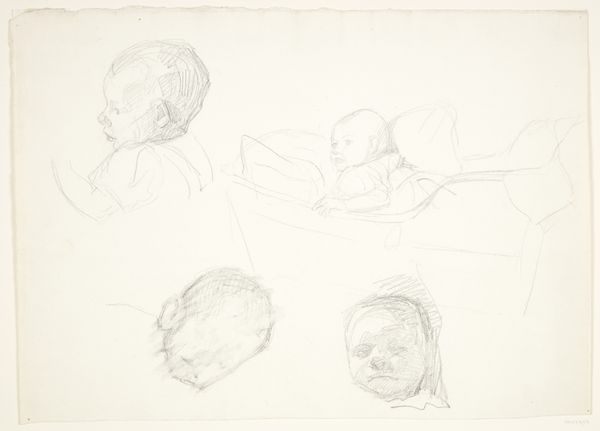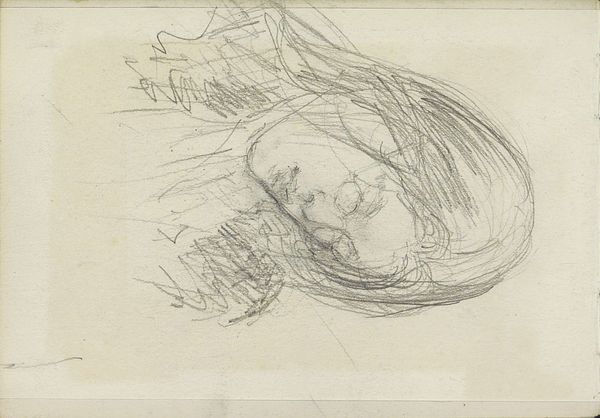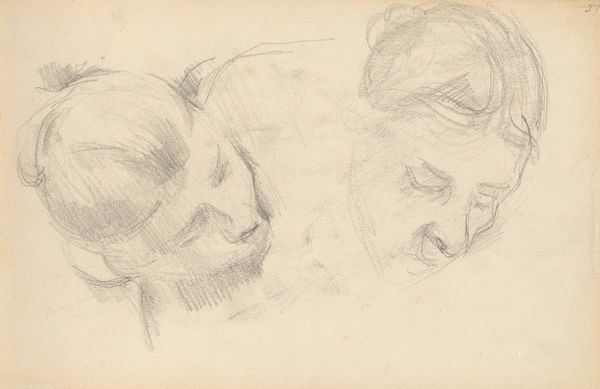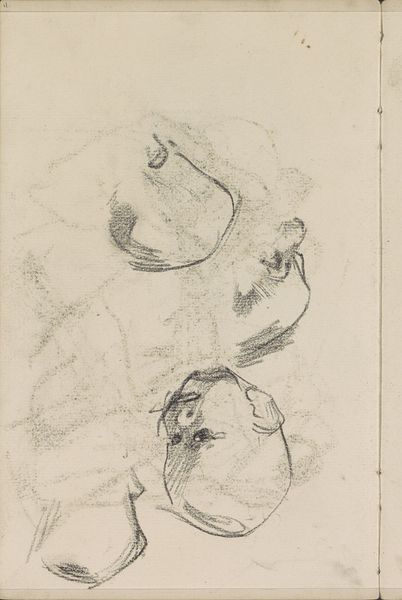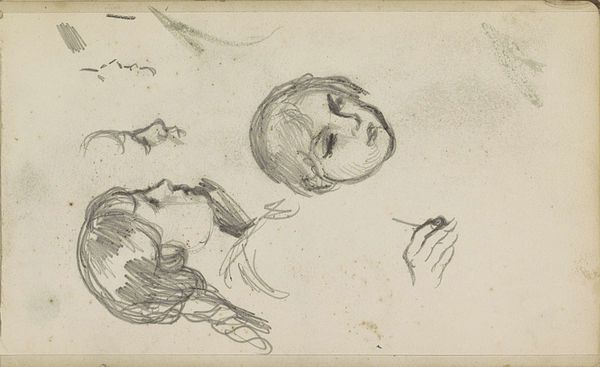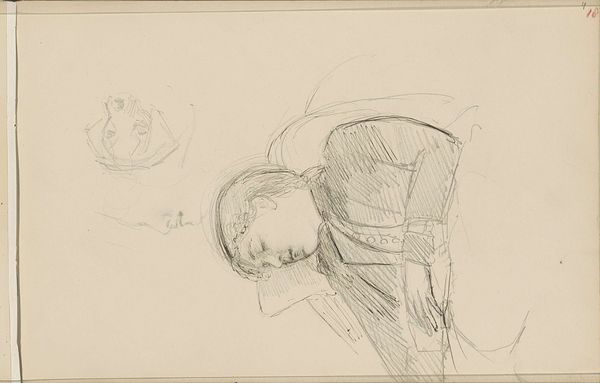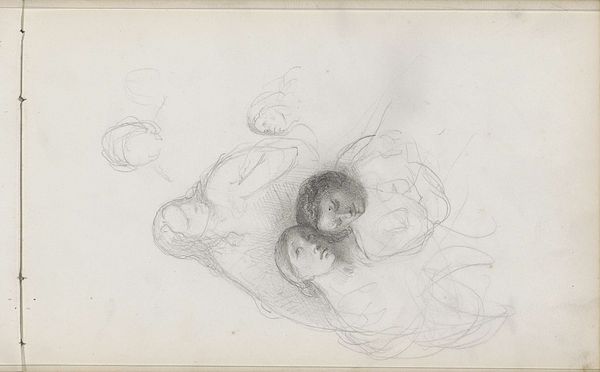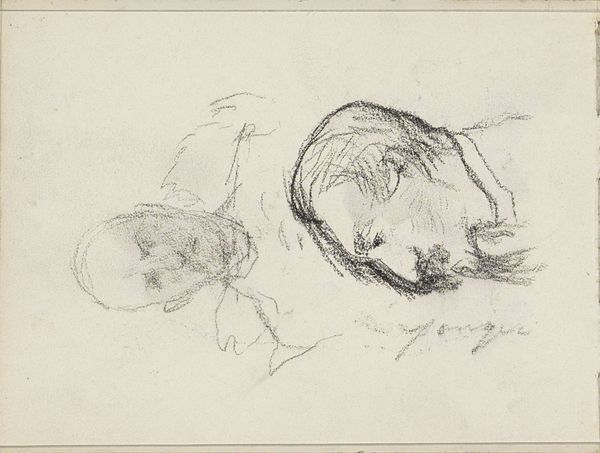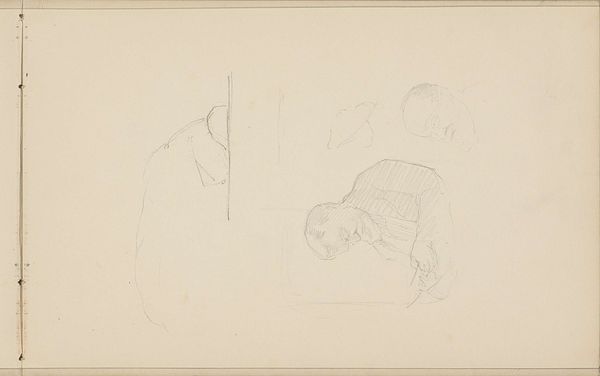
Meisje liggend met gebogen hoofd, vermoedelijk in een kist c. 1885 - 1902
0:00
0:00
drawing, paper, pencil
#
portrait
#
drawing
#
pencil sketch
#
figuration
#
paper
#
intimism
#
pencil
#
realism
Copyright: Rijks Museum: Open Domain
Curator: What an evocative drawing. This is a pencil sketch by Jozef Israëls, titled "Meisje liggend met gebogen hoofd, vermoedelijk in een kist," which translates to "Girl lying with bowed head, presumably in a coffin." It’s estimated to have been created between 1885 and 1902. Editor: It has an immediate emotional impact. The delicate lines, the way the head is bowed... there's a palpable sense of sorrow and resignation. The implied enclosure amplifies the feeling of confinement, both physical and perhaps emotional. Curator: Yes, and I think to fully understand this image, we need to consider Israëls' broader engagement with representing the lives of marginalized communities, particularly within the context of late 19th-century European society and its patriarchal structure. The girl's vulnerability, her lack of agency... Editor: I see that, absolutely. The question of agency is key here. Who is placing her there, in that box? And what does her passive pose signify within a social landscape that often silenced and oppressed young women? Is this a commentary on their restricted roles? Curator: Precisely. Israëls often depicted scenes of poverty and death, which spoke to a growing social consciousness in the art world, but also had its limitations in terms of romanticizing suffering. Editor: There's a compelling intimacy despite the probable death scene. The simple pencil work adds to that sense of quietness, and creates a private and personal world, contrasting with its suggested sociopolitical implication. Curator: And the doubling of the figure? It creates a disturbing sense of repetition, perhaps suggesting the endless cycle of poverty and powerlessness passed down through generations. How does this impact your emotional reading? Editor: The doubled figure is disquieting. Are we seeing two versions of the same tragedy, highlighting the cyclical nature of oppression and marginalization? Or is it meant to show how these oppressions accumulate over a lifetime of struggle? This ambiguity certainly leaves us pondering the image's power. Curator: Reflecting on this sketch, it is imperative that as a society, we are critical of those power dynamics that place such vulnerabilities on marginalized communities and their representations. Editor: Yes, by understanding the context and asking important questions we can see the world from a variety of viewpoints.
Comments
No comments
Be the first to comment and join the conversation on the ultimate creative platform.
